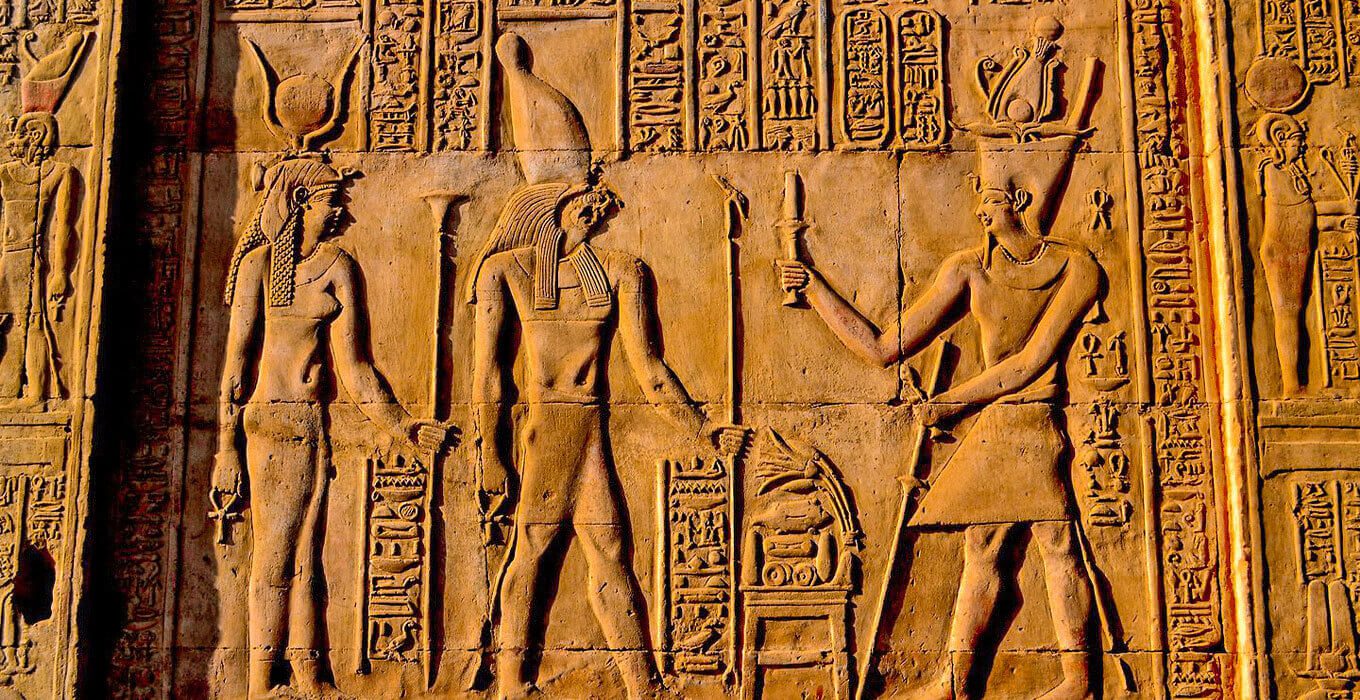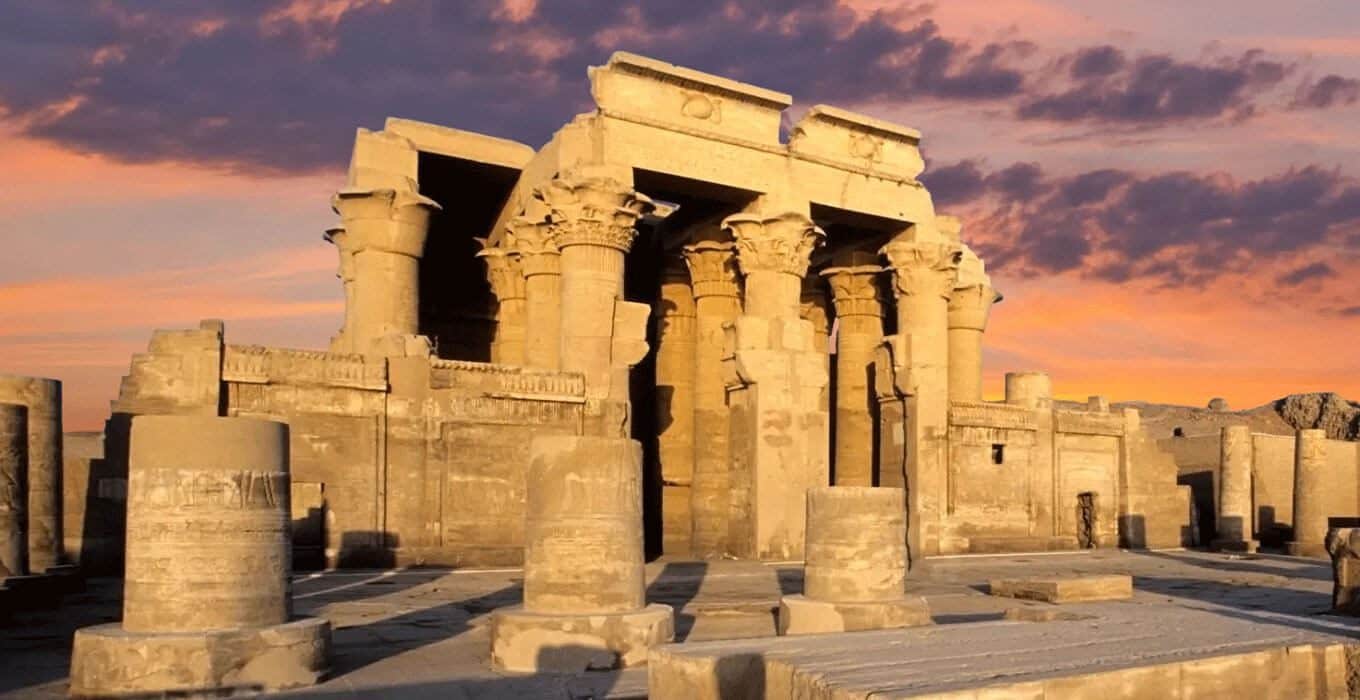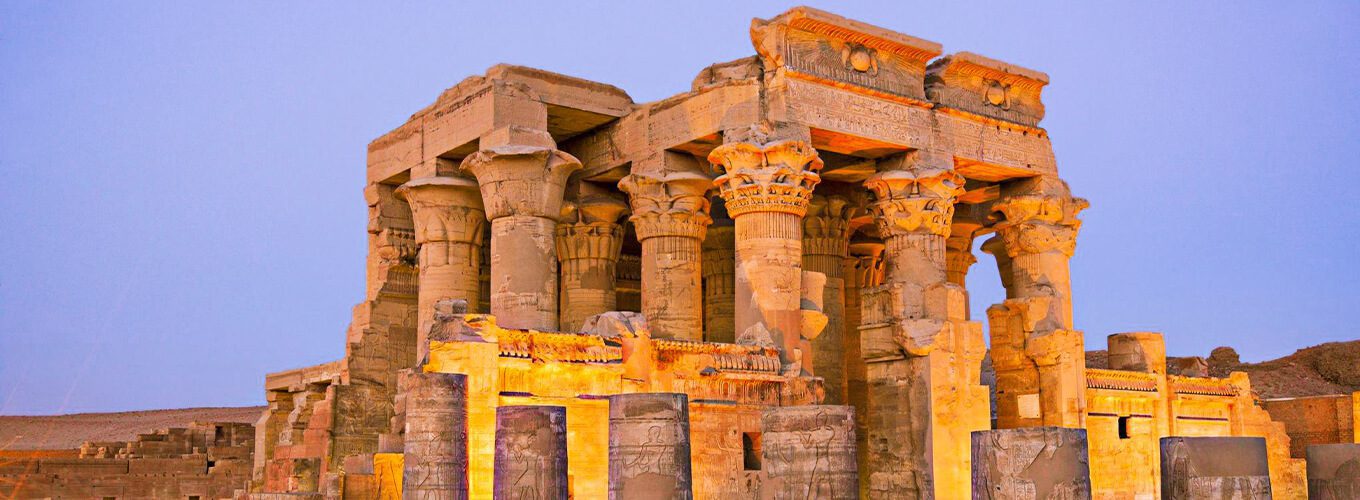Kom Ombo, situated on the banks of the Nile in Aswan, Egypt, is an extraordinary city, hosting a temple steeped in over 2,000 years of history. Nestled along the river’s edge, the Kom Ombo temple stands out for its remarkable symmetry, boasting two entrances, hypostyle rooms adorned with columns, and dual sanctuaries. This unique structure pays homage to two distinct gods: Horus, Haroeris, and Sobek.
Constructed during the Ptolemaic dynasty in the 2nd century BC, the temple evolved, acquiring elements of Roman influence during their dominance. Emperor Augustus contributed to the temple’s grandeur, adorning its entrance pylon with bas-reliefs portraying Roman emperors venerating Egyptian deities.
The temple’s exterior features a striking relief depicting Imhotep, showcasing ancient medical instruments and texts on medical practices remarkably similar to those employed today. Furthermore, it stands as a significant sanctuary dedicated to Sobek, the crocodile-headed deity revered as the Nile’s god and, according to myth, the creator of the universe.
Adjacent to the Kom Ombo temple lies the Crocodile Museum, delving deeper into the reverence and worship surrounding Sobek. This museum houses archaeological remnants, including crocodile mummies, serving as objects of adoration in ancient Egyptian culture.
Step into a world of ancient wonders and modern luxury with our bespoke Luxury Egypt Vacations. Book your exclusive getaway now!
The City of Kom Ombo: Tracing Ancient History


Kom Ombo, positioned on the western bank of the Nile, approximately 40 kilometers north of Aswan, once thrived as a pivotal point along caravan routes leading to Nubian gold mines. The city’s rich past boasts numerous archaeological sites, prominently featuring the Sobek and Haroeris temples. Offering a panoramic view of the Nile, the city overlooks Mansourieh Island, nestled atop a small hill.
The name “Kom Ombo,” signifying “golden,” stemmed from its strategic location near gold mines. In ancient times, it was referred to as “Nobit” by the Egyptians, “Anbu” in Coptic, and “Ambos” in Greek, alluding to the hilly terrain that characterized the area.
Historical Significance and Construction of Kom Ombo Temple
Initially named Pa-Sobek in ancient Egypt, the temple was dedicated to Sobek, the deity associated with water, Nile floods, and fertility, recognized as the son of the goddess Neith. Its construction honored Sobek and Horus, resulting in a dual temple showcasing traditional elements of Egyptian religious architecture.
The temple’s construction unfolded across several stages, commencing with King Ptolemy V in the 2nd century BC and continuing through various rulers and periods of Roman influence, culminating in its completion during the reigns of emperors such as Tiberius, Domitian, and Caracalla.
Personalize your dream vacation with our Egypt Tailor Made Holidays. Start crafting your bespoke adventure today!
Architectural Marvels of Kom Ombo Temple
The architectural marvel of the double temple is defined by its symmetrical design, featuring separate gates leading to sanctuaries devoted to Horus and Sobek. Enclosed by a grand wall, the temple encompasses courtyards adorned with columns, remnants of altars, and intricate carvings depicting imperial offerings and religious processions.
Constructed mainly from limestone, the temple’s layout and design parallel other Roman-era monuments in Upper Egypt. Noteworthy features include the Sobek Chapel with dual entrances, the Horus Chapel with a single entrance, and remnants of statues and celestial paintings adorning its walls and ceilings.
The Kom Ombo Temple, standing as a testament to Egypt’s ancient splendor and religious devotion, attracts tourists and history enthusiasts from across the globe.
From the Great Pyramids to the Nile’s serene waters, our Egypt Trip Planner helps you discover Egypt’s treasures tailored just for you.
Fascinating Insights about Kom Ombo Temple


The Kom Ombo Temple provides profound insights into ancient Egyptian priests’ reverence for the natural world and its cycles. It emphasizes, in particular, the sacredness ascribed to Nile crocodiles, a significant aspect of the temple’s symbolism, as shown by their gatherings at a river bend.
Upon visiting the temple, visitors can observe the mummified crocodiles showcased in three halls leading to the double sanctuary of Horus and Sobek. These halls also feature clay sarcophagi and intricate wall reliefs. Additionally, a museum near the temple displays some of the 300 crocodile mummies.
A tumultuous history marks the temple’s existence, with floods and earthquakes destroying it over time. Subsequently, the temple endured phases where it was repurposed as a quarry and later transformed into a Coptic Orthodox church, resulting in modifications to the original inscriptions.
Originally known as Pa-Sobek in ancient Egypt, the temple paid homage to Sobek, the god associated with water, Nile floods, and fertility, often revered as the son of the goddess Neith. Sobek held significance in Crocodilopolis, now Faiyum, the capital of Egypt’s 21st district in Upper Egypt.
The temple’s construction began during the reign of Ptolemy VI, with subsequent rulers adding expansions. Ptolemy XIII notably contributed to the outer and inner colonnaded halls, enhancing the temple’s grandeur and complexity.
Embark on a voyage of discovery along the Nile with our exquisite Luxury Egypt Tours with Nile Cruise. Luxury and history merge to create the perfect journey.
Location and Journey to Kom Ombo Temple
Situated in the village bearing the same name, the Kom Ombo temple resides in Upper Egypt’s southern region, a testament to the religious fervor during the Ptolemaic dynasty. Its proximity to the Nile River allows for stunning vistas, especially when approached via a Nile cruise. It offers a remarkable view as the temple stands majestically along the riverbank, welcoming arriving ships with its captivating presence.
The temple’s location and its alignment with the Nile’s banks make it an iconic and picturesque site, emphasizing its significance in ancient Egypt’s religious landscape.
Related articles:
- Philae Temple: The Sacred Island of Goddess Isis
- 5 Night Nile Cruise: Your Way to Experience The Nile River
- Temple of Edfu: Discover the Best-Preserved Temple in Egypt
- Egypt Temples: A Guide to the Country’s Most Iconic Temples
- Top 17 Things To Do in Luxor: Luxor Wonder Landmarks
- 14 Days Luxury Tour Cairo
